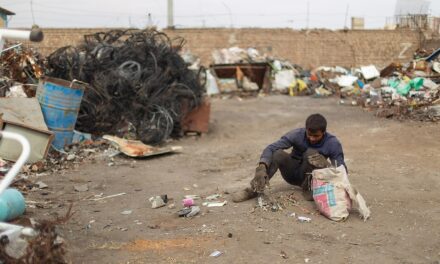Community and Stakeholder Involvement near key regions affected by the great salt lake water shortages
Community and Stakeholder Involvement – Everything you need to know!
The Great Salt Lake: A Vital Ecosystem on the Brink
Our beloved Great Salt Lake is shrinking, and the consequences are dire. This iconic body of water, a vital part of Utah’s ecosystem and economy, is facing a crisis driven by climate change and unsustainable water use.
The shrinking lake is a ticking time bomb. As the water recedes, the exposed lakebed turns into a vast dust bowl. Imagine dust storms engulfing communities, carrying toxic pollutants and impacting health, agriculture, and infrastructure. This is not a distant threat; it’s happening now, and the situation is only getting worse.
This is not just an environmental crisis; it’s a human one. The Great Salt Lake provides critical habitat for countless species, supports a thriving tourism industry, and contributes to our state’s unique character. Without action, we risk losing these benefits forever.
The solution lies in collective action. We must conserve water in our homes, businesses, and agricultural practices. By working together, we can find innovative solutions to ensure the Great Salt Lake has the water it needs to thrive.
The future of the Great Salt Lake is in our hands. Let’s join forces and protect this vital resource for generations to come.
The Great Salt Lake: A Sea in Trouble
TL;DR: The Great Salt Lake is shrinking due to climate change and overuse of water. This hurts the environment and people. We need to conserve water, use it smarter, and work together to save the lake.
The Great Salt Lake’s Water Journey
The Great Salt Lake is a giant, salty body of water in Utah. It’s like a big bathtub, but the water doesn’t flow out. The water gets there through a journey:
- Snow and rain: The mountains surrounding the lake get lots of snow in winter. When it melts, it flows down rivers and streams into the lake.
- Rivers: Rivers like the Jordan River bring water from the mountains to the lake.
- Evaporation: The hot sun causes the water in the lake to evaporate, leaving salt behind. This makes the lake salty!
A Shrinking Sea
The Great Salt Lake is facing a big problem: it’s getting smaller and smaller. This is happening for several reasons:
- Climate change: The Earth is getting warmer, and this means more water evaporates from the lake. It also means less snow falls in the mountains, leading to less water flowing into the lake.
- Water use: People use a lot of water for farming, drinking, and other things. This leaves less water for the lake.
The Impact of a Shrinking Lake
When the Great Salt Lake shrinks, it hurts both the environment and people:
- Dust storms: The dry lakebed becomes dusty, and strong winds can blow the dust for miles. This dust can cause breathing problems and hurt crops.
- Wildlife: Many birds and animals depend on the lake for food and shelter. A smaller lake means fewer birds and animals can survive.
- Economy: The Great Salt Lake brings tourism and jobs to the area. A shrinking lake could hurt the economy.
The Great Salt Lake’s Future: Working Together
To save the Great Salt Lake, we need to work together:
- Water conservation: We need to use less water in our homes and gardens.
- Smart irrigation: Farmers can use new ways to water their crops that use less water.
- Policy changes: Governments can make laws to protect the lake and encourage water conservation.
A Rescue Mission
The Active Climate Rescue Initiative is a group that’s working hard to protect the Great Salt Lake. They are trying to find solutions to make sure there is enough water for everyone. They are also working with communities to create long-term plans to help the lake and its surrounding area.
A Bright Future for the Great Salt Lake
By working together, we can find ways to make sure the Great Salt Lake has enough water. We need to take action to protect this important part of our environment and the future of the Great Salt Lake region.
More on Community and Stakeholder Involvement…
- ## SEO Keywords: Community and Stakeholder Involvement & Long-term Management Plans
- Community & Stakeholder Involvement:
- community engagement
- stakeholder engagement
- community relations
- stakeholder relations
- community outreach
- stakeholder outreach
- public consultation
- community consultation
- stakeholder feedback
- community feedback
- community involvement strategies
- stakeholder engagement strategies
- community building
- stakeholder partnerships
- community development
- community empowerment
- social responsibility
- corporate social responsibility
- community impact
- stakeholder impact
- sustainable development
- inclusive development
- Long-term Management Plans:
- long-term planning
- strategic planning
- business planning
- sustainability plan
- environmental management plan
- risk management plan
- financial planning
- operational planning
- project management plans
- resource management
- capacity building
- organizational development
- strategic alignment
- performance monitoring
- goal setting
- objective setting
- key performance indicators
- continuous improvement
- agile planning
- future planning
- foresight
- scenario planning
- Combined Keywords:
- community involvement in planning
- stakeholder engagement in long-term planning
- community-based long-term management
- stakeholder-driven long-term strategies
- community participation in sustainability planning
- collaborative long-term planning
- building community consensus on management plans
- integrating stakeholder perspectives into long-term plans
- fostering community ownership of management plans
- achieving long-term sustainability through community involvement
- Additional Keywords:
- stakeholder analysis
- community needs assessment
- community mapping
- stakeholder mapping
- communication plan
- transparency
- accountability
- stakeholder reporting
- community engagement tools
- stakeholder engagement software
- best practices for community involvement
- best practices for stakeholder engagement
- measuring community impact
- measuring stakeholder impact
- Specific Sector Keywords:
- (Sector) community engagement
- (Sector) stakeholder engagement
- (Sector) long-term management plan
- (Sector) sustainability planning
- (Sector) community development plan
- Example:
- **”community engagement in renewable energy projects”
- **”stakeholder involvement in sustainable forestry management”
- **”long-term plan for water resource management”
- **”community-driven strategies for climate change mitigation”
- **”best practices for community engagement in urban planning”
- Remember to adapt these keywords based on the specific context of your content.











